
Rental, Hiring and
Real Estate Services
Industry Insight
October 2022

Industry Insight | Rental, Hiring and Real Estate Services | October 2022
2
Contents
Introduction ................................................................................ 3
Report coverage ........................................................................ 5
Executive summary .................................................................... 6
Industry outlook .......................................................................... 9
Workforce and skilling implications .......................................... 14
Education and training pipeline ................................................ 17
Workforce priorities .................................................................. 20
Collaborative response ............................................................ 22
Appendix A: Data methodology ............................................... 24
Appendix B: Victorian VET pipeline methodology ................... 27
Appendix C: Stakeholder engagement process ...................... 28
References ............................................................................... 29

Industry Insight | Rental, Hiring and Real Estate Services | October 2022
3
Introduction
This report on the Rental, Hiring and Real Estate Services industry forms part of the 2022 Victorian
Skills Plan and outlines demand for occupations, education and training directed to meeting the
demand and current workforce issues facing the industry.
This report has been prepared by the Victorian Skills Authority (VSA). The VSA was formed in July
2021 in response to the review Future Skills for Victoria: Driving collaboration and innovation in post-
secondary education and training (known as the Macklin Review). The VSA is charged with preparing
an annual Victorian Skills Plan (the Skills Plan) to guide decision-making on skills and training, by the
Government, education and training providers, industry and communities.
The Victorian Skills Plan
The annual Skills Plan sets out Victoria’s skills needs for 2022 to 2025 by drawing on data, evidence
and insights from a range of system-wide and local sources.
The Government in conjunction with industry, communities and education and training partners brings
collaborative action through the Skills Plan which:
• defines skill needs with clear statements of required skills and capabilities (current and emerging)
• sets priorities for post-school education and training in Victoria
• communicates to the community the opportunities education and training can provide to offer
careers for individuals that also meet the workforce needs of industry
• aligns action across industry and government to support improved outcomes for all Victorians.
The Skills Plan consists of:
• a summary report – the Victorian Skills Plan
• the industry needs of the Victorian economy segmented into 13 insight reports, each comprising
like industries – of which this report is one
• profiles of industry and occupations in the regional areas of Victoria which outline priorities for
skills development – either as snapshots or Regional Skills Demand Profiles
• current employment and forecast demand to 2025 across Victoria – a user-driven dashboard.
About Industry Insight Reports
Each industry insight is based on robust research, qualitative and quantitative data collection and
analysis and extensive consultation with the Government’s Industry Advisory Groups, partners and
stakeholders over a period of six months. Each report sets out to:
• profile the industry outlook, taking into account sector trends and key drivers of demand
• detail the workforce and skilling implications of the industry based on forecasting
• set industry priorities in responding to current and future workforce challenges
• provide initial guidance for an education and training response to these challenges.
The industries reflected in each report are defined according to their classification within 1292.0 -
Australian and New Zealand Standard Industrial Classification (ANZSIC) 2006, prepared by the
Australian Bureau of Statistics. Occupations within industries have been defined using the Australian
and New Zealand Standard Classification of Occupations (ANZSCO).
Each industry insight contributes to the conclusions and recommendations of the Skills Plan, focusing
on actions for implementation over a three-year period.
The VSA acknowledges and extends sincere thanks to the individuals and organisations that
participated in the consultations and contributed to these materials.
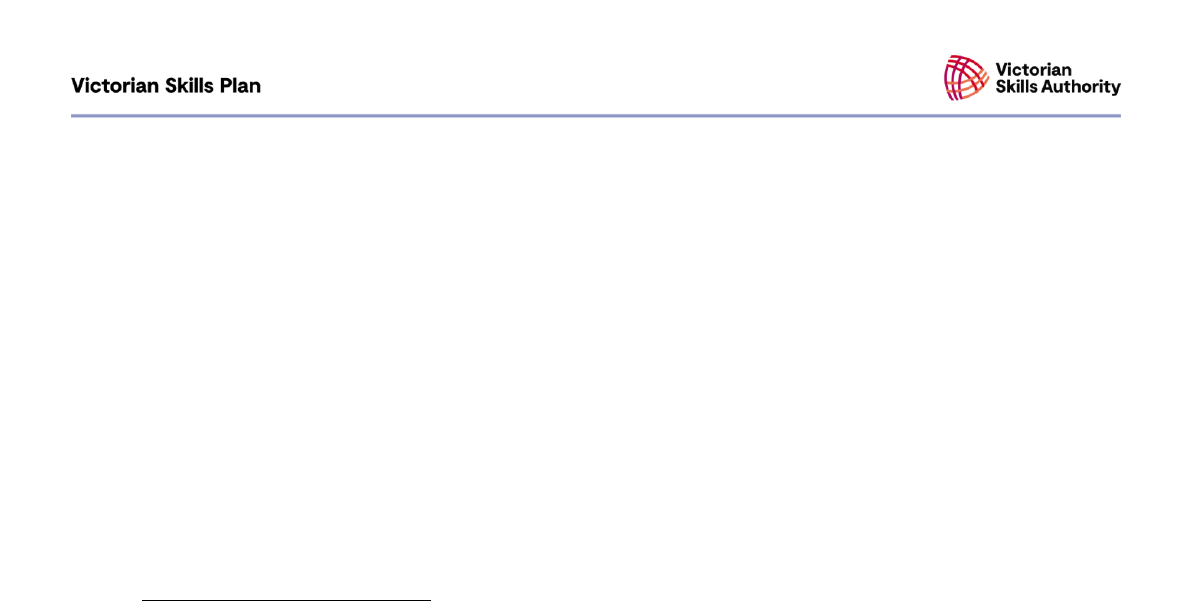
Industry Insight | Rental, Hiring and Real Estate Services | October 2022
4
Using this report
This is a point-in-time report on the rental, hiring and real estate Services industry in Victoria and the
associated skills and workforce issues.
This report, along with the Skills Plan, has been prepared for industry and provider partners as a
summary of demand for occupations and workforce issues. In addition to being used by the Victorian
Government to consider responses, as a public document it is available to industry and education and
training partners to form actions and responses.
The report does not represent the full picture of workforce issues in the industry. Opportunities
associated with skills and workforce are longstanding. The information in the report, however, provides
the basis for ongoing work on skills demand and responses, including by the VSA and through the
Industry Advisory Groups.
Feedback
Feedback on this report, and others, is welcome and can be provided to
SkillsPlan@education.vic.gov.au. Feedback will contribute to developing insights and actions.
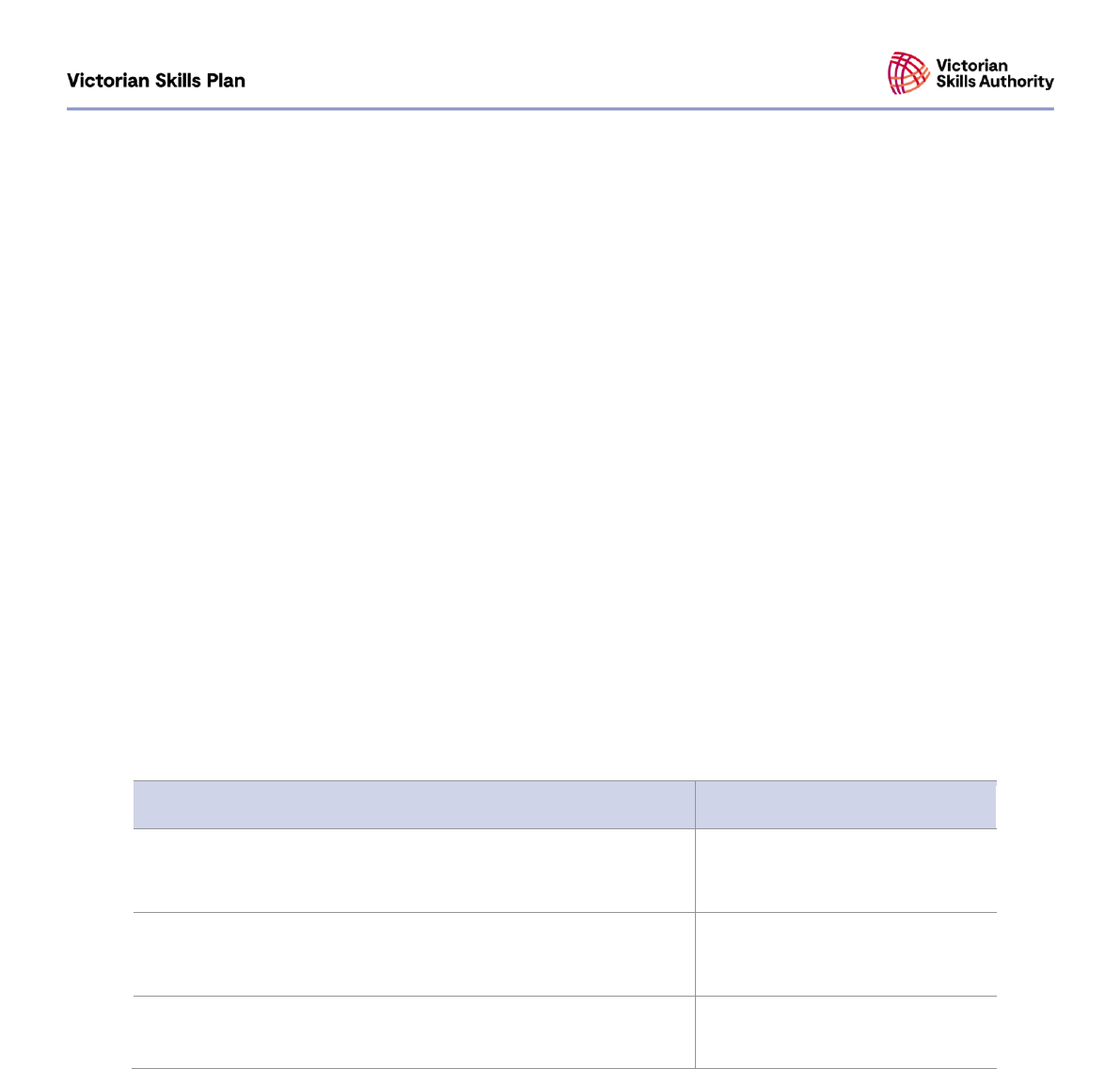
Industry Insight | Rental, Hiring and Real Estate Services | October 2022
5
Report coverage
This industry insight focuses on the rental, hiring and real estate services industry as defined under
ANZSIC and the occupations relevant to the industry, classified according to ANZSCO. It covers the
selling, renting, managing and buying of real estate. It also includes the rent and hiring of tangible and
intangible property such as bloodstock, cars and patents.
Statistics about an industry and its sub-sectors are collated by the Australian Bureau of Statistics
(ABS) from the activity of businesses. Each business is classified to an industry based on their primary
activities. Where an individual works for multiple businesses, their main job is used.
Industry classifications rarely encompass the full nature of the work (and therefore skills) associated
with a given industry. ABS definitions of industries or sectors may not align with the definitions used by
an industry association, while the allocation of businesses on primary activity can result in businesses
that perform similar services but with a different emphasis being classified across different industries.
Coverage in this report is limited to employment in the industry and sectors as defined by ABS, noting
some occupations are almost exclusively associated with an industry, such as real estate agents in
the rental, hiring and real estate services, while others, such as accountants and electricians, are
associated with many industries. Note, however, that occupational demand for Victoria as reflected in
the dashboard is the total of occupational demand for all industries.
Table 1 sets out related activities that may occur within the rental, hiring and real estate services
industry but are reported formally under other industries. The relevant Industry Insight report is listed.
Table 1 | Scope of related industry activities and insights related industries
Activities
Industry insight
Automotive sales
Services
Streaming services
Professional, Financial and
Information Services
Farming of cattle and livestock
Agriculture, Forestry and Fishing

Industry Insight | Rental, Hiring and Real Estate Services | October 2022
6
Executive summary
Industry outlook
The rental, hiring and real estate services industry impacts the livelihoods of most Victorians through
the buying, selling or hiring of property and equipment for personal and commercial purposes. Over
52,700 workers are employed in Victoria across real estate and other rental and leasing services.
1
Significant growth in the real estate market has occurred over the last few years, particularly for
residential properties. Despite COVID-19 impacting business operations, the industry is expected to
experience continued growth, albeit subject to market volatility. Key drivers include ongoing demand
for residential property underpinned by anticipated return to population growth, particularly in regional
areas.
Workforce and skilling implications
On average, across all industries total employment is expected to grow by an additional 211,900
workers to 2025, from 3,538,900 workers in 2022, an annual growth rate of 1.97 per cent
a
.
2
,
3
In
comparison between 2017 and 2020 employment grew by 2.68 per cent
b
annually.
4
In the rental, hiring and real estate services industry, employment is expected to grow by an additional
3,700 workers to 2025, from 52,700 workers in 2022, an annual growth rate of 2.43 per cent
c
which is
higher than the overall Victorian average across all industries.
5
,
6
In comparison between 2017 and
2020 employment across this industry experienced a decline of 0.31 per cent
d
.
7
Moderate workforce growth will be required to meet expected demand. By 2025, an estimated 5,600
new workers are needed.
8
This includes approximately 3,700 employment growth and replacement of
1,900 retirees.
9
,
10
Table 2 identifies the top ten occupations in demand across the industry by 2025.
11
Of these, seven
occupations (highlighted in table) are expected to experience employment growth at a rate above the
overall Victorian average between 2022 and 2025.
Table 2 | Occupations in demand in the rental, hiring and real estate services industry by
2025
e
,
12
,
13
Occupation
Current
employment
Employment growth
(2022−25)
Retirements
(2022−25)
New
workers
needed
(2022−25)
Number
Per cent
Real estate sales agents
17,850
1,800
2.6%
600
2,350
General clerks
3,200
200
3.4%
100
300
Land economists and valuers
2,100
150
3.2%
50
200
Other sales assistants and
salespersons
450
100
2.4%
50
150
Advertising and sales
managers
2,300
50
1.9%
50
100
Office managers
2,350
50
1.8%
50
100
a
3-year compound annual growth rate
b
Computed for 2017 to 2020 employment growth for pre-COVID comparison
c
3-year compound annual growth rate
d
Computed for 2017 to 2020 employment growth for pre-COVID comparison
e
Due to rounding, some totals may not correspond with the sum of the separate figures

Industry Insight | Rental, Hiring and Real Estate Services | October 2022
7
Receptionists
2,900
Less than
50
0.5%
50
100
Contract, program and project
administrators
650
50
3.0%
Less than 50
50
Finance managers
1,200
50
3.3%
Less than 50
50
Financial investment advisers
and managers
650
50
3.7%
Less than 50
50
Legend
Above Victorian employment growth average between 2022 and 2025
Technological advancements that enable online inspections are driving demand for new jobs,
including online buyer’s advocates, data analysts and pricing analysts. In addition, regulatory reforms
across the industry drive a need for regulatory affairs specialists and regulatory compliance officers.
Industry has also identified changing skill needs. Workers will increasingly need to demonstrate an
understanding of ethics, compliance, and digital literacy. Property managers who work with vulnerable
clients will also need skills in empathy and engagement.
Meeting this demand will be challenging. Industry reports the need to upskill a large proportion of its
workforce to keep pace with regulatory reform, difficulty attracting workers to the industry and
challenges with retaining existing staff as all contributing to this challenge.
Workforce priorities
Two priorities are identified to address workforce and skilling needs for the rental hiring and real estate
services industry:
1. Adapt employment and education practices to align with the new minimum qualification for real
estate agents – to ensure workers are appropriately trained in emerging issues (such as changes
to rental laws) with sufficient practical experience.
2. Provide career advancement opportunities by developing specialised skills in the real estate sector,
such as auctioneering or valuation through further study – focus is required to upskill workers to
meet current and future demand in technical and leadership roles.
Education and training pipeline and workforce response
Pathways to employment in the rental, hiring and real estate services industry are split across higher
education and VET with 30.6 per cent of workers holding a degree or above as their highest level of
education and 36.3 per cent holding a VET level qualification as their highest level of education.
14
There were approximately 4,070 enrolments in relevant VET qualifications in 2020
f
and close to 1,150
equivalent full-time study load (EFSTL) in higher education in 2019.
15
,
16
The key entry point to the industry is the Certificate IV in Real Estate Practice, accounting for over
4,050 enrolments.
17
Graduates from VET courses provide an important source of workers to the
industry. While activity is high for the Certificate IV in Real Estate Practice, there is opportunity to
better respond to the identified priorities across the education pipeline.
Some industry representative indicated that the time taken to obtain the necessary qualifications is
challenging when real estate workers are needed quickly. New regulation requires students to have
f
VET enrolments related to the Rental, hiring and real estate services industry include only courses that are deemed as primary
pathways into this sector. Many of these courses serve multiple industries and the total enrolment numbers are reflective of this
broader pipeline. VET enrolments in courses that primarily feeds into other sectors but also support the Rental, hiring and real
estate services industry are included in the industry in which the course primarily supports.

Industry Insight | Rental, Hiring and Real Estate Services | October 2022
8
completed a prescribed number of units, before shadowing licensed operators. Removing barriers to
practical experience in line with policy and regulation is a key focus. Increased industry exposure can
ensure students learn from experienced practitioners with an up-to-date understanding of regulatory
requirements.
As the workforce builds, maintaining ethical and quality standards is vital. Qualifications focused on
auctioneering and valuing can cultivate the skills needed to meet industry demand. Further upskilling
workers through micro-credentials and short courses on their legislative and ethical obligations can
help maintain agent conduct.
Without consideration of policy, job design and the employee value proposition, the real estate
industry will continue to face recruitment and retention challenges. Flexible work arrangements,
funding and study leave can drive change.
Table 3 highlights actions that could be adopted by education, industry, and government to meet
workforce demand.
Table 3 | Actions for consideration for education, industry, and government
• Increase practical experience opportunities for students seeking to become real estate agents.
• Facilitate specialisation with targeted education and training opportunities in areas such as
auctioneering and valuation.
• Ensure existing workforce practices and recruitment policies respond effectively to fluctuations in
demand across the industry and the time taken to train new agents.

Industry Insight | Rental, Hiring and Real Estate Services | October 2022
9
Industry outlook
The rental, hiring and real estate services industry is likely to fluctuate in
proportion to predicted volatility in the real estate market
The rental, hiring and real estate services industry, consisting of real estate and other rental and
leasing, plays a vital role in Victoria’s economy despite the relatively small size of its workforce.
The rental, hiring and real estate services industry employs 1.5 per cent of the total Victorian
workforce (52,700 workers).
18
Across the industry, approximately 47.8 per cent of workers are female,
similar to the Victorian average of 47.2 per cent.
19
Approximately 28.1 per cent of workers in the sector
are aged over 50, similar to the Victorian average across all sectors of 29 per cent.
20
The impacts of COVID-19 on the industry have been significant, varying by sector within the industry.
Demand and opportunity for digital delivery has increased in response to COVID-19 and was crucial in
facilitating online inspections and auctions when restrictions prevented gatherings at private
residences in 2020 and 2021.
21
Employment opportunities during this period were significantly
reduced but have rebounded in proportion to market fluctuations.
The rental, hiring and real estate services industry provides a wide range of sales and rental services
in the real estate sector, as well as hiring services for goods, equipment and other intangible assets in
the other rental and leasing sector. The key sectors within the rental, hiring and real estate services
industry are shown in Figure 1.
Figure 1 | Key sectors within the rental, hiring and real estate services industry
22
Real estate
The real estate sector makes up the majority of the industry workforce (89.6 per cent).
23
The real
estate sector engages in property marketing and sales, auctioneering, insurance, financing,
settlements and conveyancing, maintenance and rental property management, business broking,
owner’s corporation management, valuation, and buyer advocacy.
24
The largest occupation in the
sector is real estate agents (28 per cent of the workforce). Real estate agents must be licensed and
are supported by property managers (who service the rental market), clerks and other administrative
staff. The sector does not include landlords who own and lease property without a third party.
The real estate sector, although a proportionately small part of the overall workforce, services a
market which is estimated to be worth $2.56 trillion in Victoria.
25
Victorian home values increased by
Real estate
Sales
Auctioneering
Rental property management
Conveyancing
Buyer advocacy
Valuation
Other rental and leasing
Vehicle and transport
equipment leasing
Farm animal and bloodstock
leasing
Other goods and equipment
leasing
Non-financial intangible assets
leasing
Despite strong growth in recent years, the real estate activity declined when remote inspections
and auctions were required during COVID-19 and remains volatile.

Industry Insight | Rental, Hiring and Real Estate Services | October 2022
10
15.9 per cent in 2020-21, making up more than a quarter of the total value of the nation’s residential
real estate.
26
This growth occurred against the backdrop of approximately 24 per cent workforce
growth in the real estate sector over the past five years. Despite strong growth in this market in recent
years, it remains volatile, and the industry suffered significantly during the COVID-19 pandemic as
inspections and auctions were conducted remotely.
27
More recently, increases in interest rates,
uncertainty about inflation, decreasing affordability and heavy media coverage has dampened buyer
enthusiasm and the overall downtrend in property markets and dwelling values is now becoming
apparent.
28
The real estate sector is concentrated in highly populated areas. For example, the Melbourne local
government area accounts for 17.8 per cent of the real estate workforce alone. Coastal areas in
southeast and southwest Melbourne also share a large proportion of the workforce.
29
Strong
population growth is projected for Greater Melbourne (5 million in 2018 to 9 million in 2056 – growth of
approximately 80 per cent),
30
however COVID-19 appears to be having an impact on this trend. There
was a net loss of ~22,600 people from Melbourne to the rest of Victoria from January 2020 to March
2021, the highest on record.
31
Victoria also lost ~18,100 people to other states and countries in this
period, a likely consequence of extended lockdowns. It is anticipated that Victoria’s population will
rebound, but concern over housing affordability and greater acceptance of remote working are likely to
drive growth in regional areas. Regional Victorian house prices grew at the fastest rate in 20 years
through 2021, with the median house price increasing 27 per cent to reach $565,000.
32
Separately, it may take time for the commercial real estate sub-sector to rebound from the impacts of
lockdowns, remote working arrangements and business closures caused by COVID-19.
Residential property management may recover more slowly than sales, given that some of the worst
impacts of COVID-19 have been on young people and low-middle income earners, who make up a
large proportion of the rental market.
33
However, recent evidence suggests that the market is
rebounding faster than anticipated. For example, vacancies in inner city Melbourne dwellings, the
region hardest hit by COVID-19, are half what they were in August 2021.
34
However, it is likely that
demand will continue to fluctuate with broader market conditions, as referenced above.
35
Other rental and leasing
This sector makes up a small proportion of the overall industry workforce (10.4 per cent).
36
The ‘other
rental and leasing’ sector comprises a range of smaller sub-sectors whereby businesses and
consumers hire out goods, stock, and other non-financial intangible property. This sector is diverse
and connects closely to sectors in other industries including agriculture, construction, and
manufacturing (i.e., those with a greater focus on sales). Industry shifts in the rental and leasing sub-
sector to date map to these adjacent industries.
The sector includes car rentals and other transport and equipment leasing (such as farming equipment
and vehicles), along with farm animal and bloodstock leasing (such as work horses and dairy cattle for
sharemilking). These sub-sectors are most closely connected to the agriculture industry.
The other rental and leasing sub-sector also includes the hiring of scaffolding, which is most frequently
used in the construction and manufacturing industries as new infrastructure is built and plants and
other facilities are shut down for maintenance.
Video and other media leasing has substantially contracted in the last decade due to the rising
popularity of online media and streaming services. As a result, there are very few video rental stores
remaining across Victoria.
Finally, the non-financial intangible assets sub-sector includes the leasing of brand names for
franchising, patents, and taxi licences, primarily used in the course of carrying out businesses in other
industries.
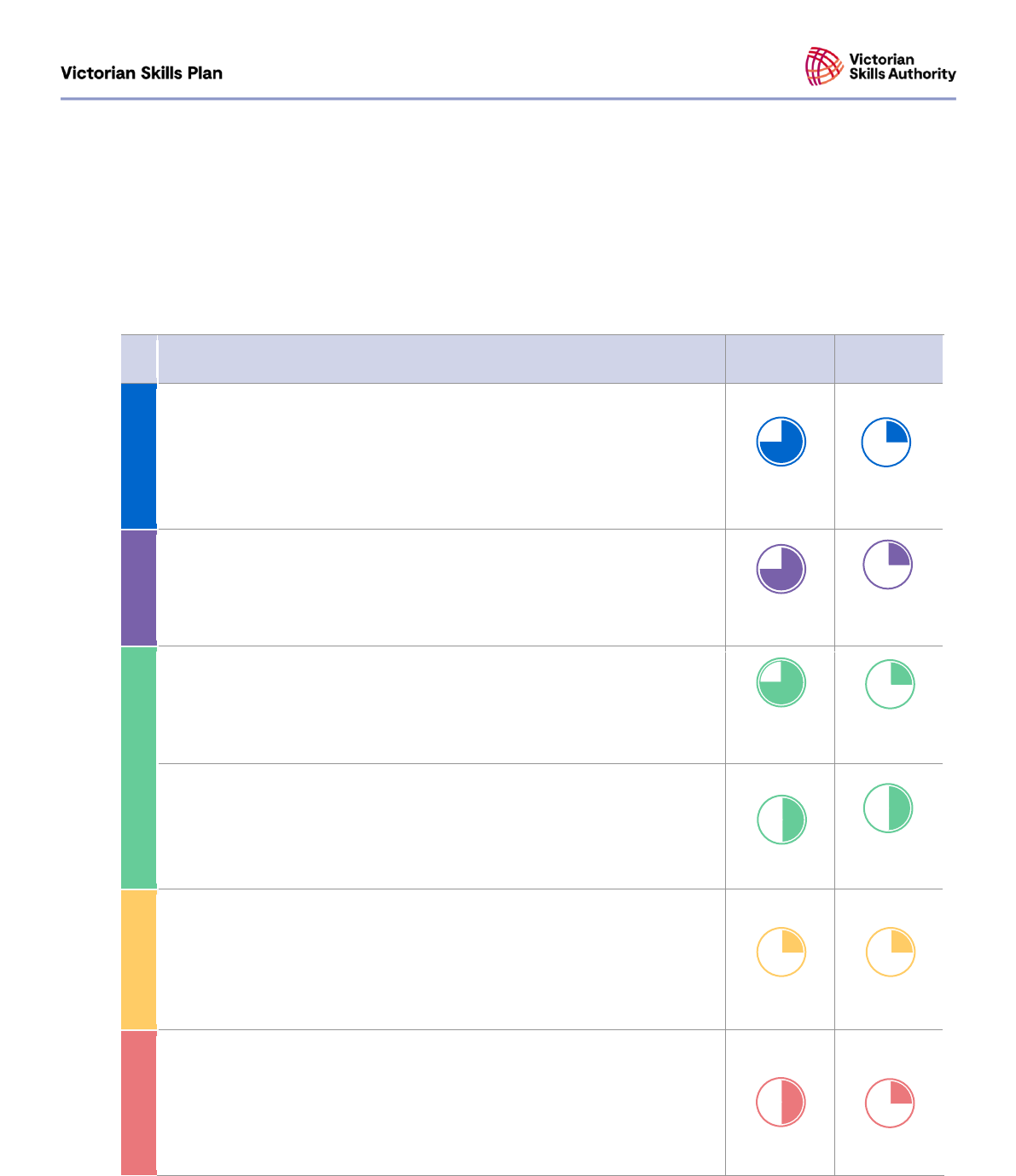
Industry Insight | Rental, Hiring and Real Estate Services | October 2022
11
The rental, hiring and real estate services industry will grow between
now and 2025
The rental, hiring and real estate service industry is expected to grow, driven by continuing growth in
the real estate market, particularly for residential properties, underpinned by population growth. The
industry outlook is broadly driven by a range of factors,
37
set out in Table 4.
Table 4 | Drivers of demand in the rental, hiring and real estate services industry
Driver
Real estate
Other rental
and leasing
Policy
Changes in the regulatory environment, professional standards and public
scrutiny is providing greater protection for buyers and renters.
High
Low
Economic
Increasing house prices continue to outstrip wage growth. This may change with
projected increases in interest rates in 2022
38
that contribute to market volatility
and place pressure on individuals’ capacity to repay mortgages.
High
Low
Social
Population growth in regional areas is increasing amid continuing strong growth
in greater Melbourne, whereas populations in some rural areas are decreasing.
High
Low
Consumers are increasingly willing to share property, rather than own it, which in
the case of real estate reflects affordability issues.
Medium
Medium
Technological
Significant advancements in technology and digitisation, including Artificial
Intelligence (AR), Augmented Reality (AR) and Virtual Reality (VR) improve
products and processes for renting and selling.
Low
Low
Environmental
Climate change is likely to increase demand for property that is environmentally
sustainable and/or (in the case of real estate) located in lower risk areas for
natural disasters and other adverse environmental concerns (e.g., rising sea
levels).
Medium
Low
Drivers are impacting sectors differently across the industry over the next three to five years.
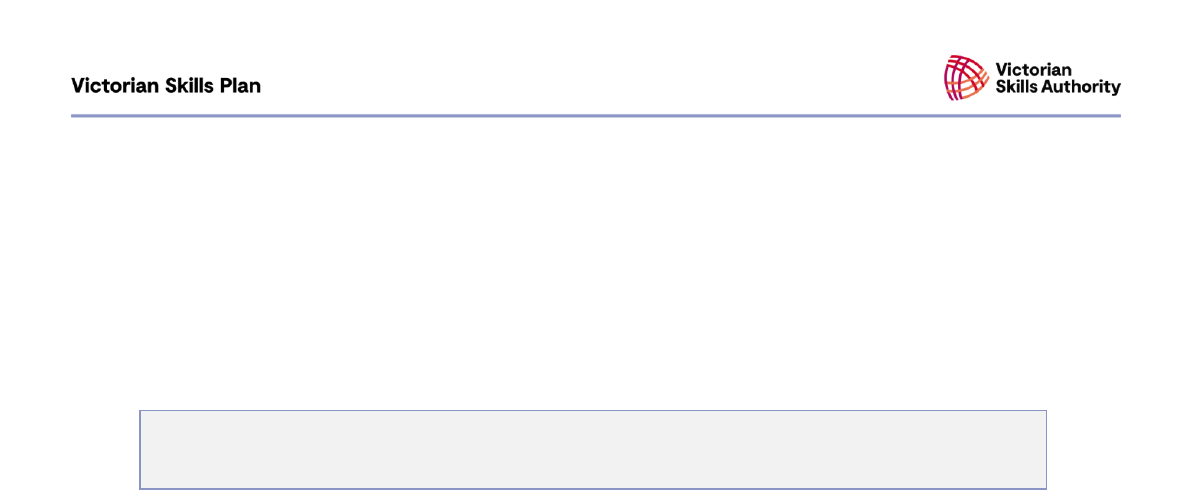
Industry Insight | Rental, Hiring and Real Estate Services | October 2022
12
Real estate
New rental laws from 2021 expand the rights and responsibilities of renters and rental providers,
making renting fairer and safer. This is likely to increase work demands for property managers as a
contact point between renters and landlords.
39
Similarly, new licensing requirements came into effect
for real estate agents in October 2020, introducing the Certificate IV in Real Estate Practice as the
minimum qualification.
40
Regulatory reform is likely to continue to affect the real estate sector. In
February 2022, the Victorian Government announced a review into underquoting laws, off-the-plan
sales and real estate agent conduct following complaints to Consumer Affairs Victoria.
41
On an economic level, house prices have consistently outstripped wage growth over the past 30
years.
42
House prices and rent in regional areas have increased in response to recent demand,
43
and
while they remain lower than in capital cities, they still threaten home affordability. However, interest
rates are now starting to rise and place downward pressure on prices.
44
The banking sector deferred repayments on home loans throughout COVID-19, reaching a peak in
June 2020 at 900,000 deferrals across Australia. However, this has shifted pressure to 2022 and
beyond for consumers to either repay or sell.
45
There was a surge in home auctions as lockdowns eased, with a 144 per cent increase in 2021
compared with 2020. December 2021 was the strongest performance for both auction volume and
sales in any quarter (a possible consequence of backlog from earlier in the year).
46
Population growth continues in regions of high amenity (tree- and sea-changer communities in Victoria
were growing 1.5 times faster than average population growth pre-COVID-19).
47
Growth is
underpinned by strategic housing projects in Armstrong Creek (Geelong),
48
Lucas (Ballarat),
49
and
Bendigo
50
– the largest housing developments in Victoria outside Melbourne. These three areas are
expected to account for half of Victoria’s regional growth to 2036.
51
A recovery in international
migration from COVID-19 will likely increase commercial and residential demand for real estate across
the State.
A greater acceptance of remote working driven by the COVID-19 pandemic is supporting more
permanent regional migration.
52
Flexibility in work models driven in part by the ‘sharing economy’
continues to grow, with Victorians engaging new ways of renting and swapping from rooms in private
homes and entire residences (Airbnb) to co-working spaces (WeWork).
53
New technologies that were introduced in the COVID-19 pandemic will continue to permit online
inspections, vendor advocacy, auctions and paperless transactions.
54
With effect from February 2021, the Victorian Minister for Planning has declared that certain high risk
external wall cladding products are prohibited for use in carrying out any building work in Victoria.
55
This may require construction work to be undertaken to remove the cladding for some property owners
and renters.
56
Other rental and leasing
Most significantly for other rental and leasing sectors, the ‘sharing economy’ continues to grow.
Victorians are engaging in new ways of renting and swapping including cars (e.g., Care Next Door,
FlexiCar) and equipment (OpenShed).
57
A global shortage of cars has more than doubled rental prices since 2019.
58
Rental companies will
continue to rectify the shortfall despite a severe global shortage of parts. For example, companies in
the vehicle and transport leasing sub-sector across Australia have bought more than 890,000 cars in
the past year.
59
Demand in the real estate sector will be driven by population growth, house prices relative to wage
growth and changes to the level of protection afforded to buyers and renters.

Industry Insight | Rental, Hiring and Real Estate Services | October 2022
13
An increasing number of Australians are travelling within the country, which has increased demand for
rental cars and is driven by greater household savings built during COVID-19 (and in lieu of overseas
holidays). On a local level, some consumer concern about surge prices on rideshare apps is driving
greater demand for taxi operators. In March 2022, 13cabs revealed that it was recruiting 4,000 drivers
to meet demand across Australia.
In November 2021, cattle prices hit an all-time high in Victoria after a year of strong growth consistent
with forecasts,
60
,
61
which may increase demand for bloodstock leasing (e.g., for sharemilking) in the
future.
62
Technological advancements in streaming platforms and online hosting continue to reshape how
consumers rent video and other media for entertainment and other purposes. This is likely to
accelerate a decline in the video and other media leasing sub-sector.

Industry Insight | Rental, Hiring and Real Estate Services | October 2022
14
Workforce and skilling implications
An estimated 5,600 new workers are required to meet projected demand
over the next 3 years
On average, across all industries total employment is expected to grow by an additional 211,900
workers to 2025, from 3,538,900 workers in 2022, an annual growth rate of 1.97 per cent
g
.
63
,
64
In
comparison between 2017 and 2020 employment grew by 2.68 per cent
h
annually.
65
In the rental, hiring and real estate services industry, employment is expected to grow by an additional
3,700 workers to 2025, from 52,700 workers in 2022, an annual growth rate of 2.43 per cent
i
which is
higher than the overall Victorian average across all industries.
66
,
67
In comparison between 2017 and
2020 employment across this industry experienced a decline of 0.31 per cent
j
.
68
The 5,600 new workers expected between 2022 and 2025.
69
comprises 3,700 in employment growth
and replacement of 1,900 retirees.
70
,
71
Growth will be concentrated in the real estate sector. Initially,
demand will focus on sales roles (e.g., real estate agents) but this is anticipated to shift towards
operations and management in later years as the workforce pipeline builds. However, workforce
numbers in the sector tend to be volatile, with large numbers of Agent’s Representatives recruited to
meet demand at critical points in the year.
Table 5 identifies the top ten occupations in demand to 2025 based on employment growth and
replacing retirees.
72
Of these, seven occupations (highlighted in table) are expected to experience
employment growth at a rate above the overall Victorian average between 2022 and 2025. These
figures are estimates but it is important to note that they may be under-estimated as they do not
account for existing vacancies nor take account of changes in the rate of workers leaving the industry,
which stakeholders indicated appears to be higher than usual.
Table 5 | Occupations in demand for the rental, hiring and real estate industry to 2025
k
,
l73
,
74
Occupation
Current
employment
Employment growth
(2022−25)
Retirements
(2022−25)
New
workers
needed
(2022−25)
Number
Per cent
Real estate sales agents
17,850
1,800
2.6%
600
2,350
General clerks
3,200
200
3.4%
100
300
Land economists and valuers
2,100
150
3.2%
50
200
Other sales assistants and
salespersons
450
100
2.4%
50
150
Advertising and sales
managers
2,300
50
1.9%
50
100
Office managers
2,350
50
1.8%
50
100
Receptionists
2,900
Less than
50
0.5%
50
100
g
3-year compound annual growth rate
h
Computed for 2017 to 2020 employment growth for pre-COVID comparison
i
3-year compound annual growth rate
j
Computed for 2017 to 2020 employment growth for pre-COVID comparison
k
Due to rounding, some totals may not correspond with the sum of the separate figures
l
Supporting roles such as accountants have been excluded, as they are included in the Professional, Financial and Information
Services insight report.
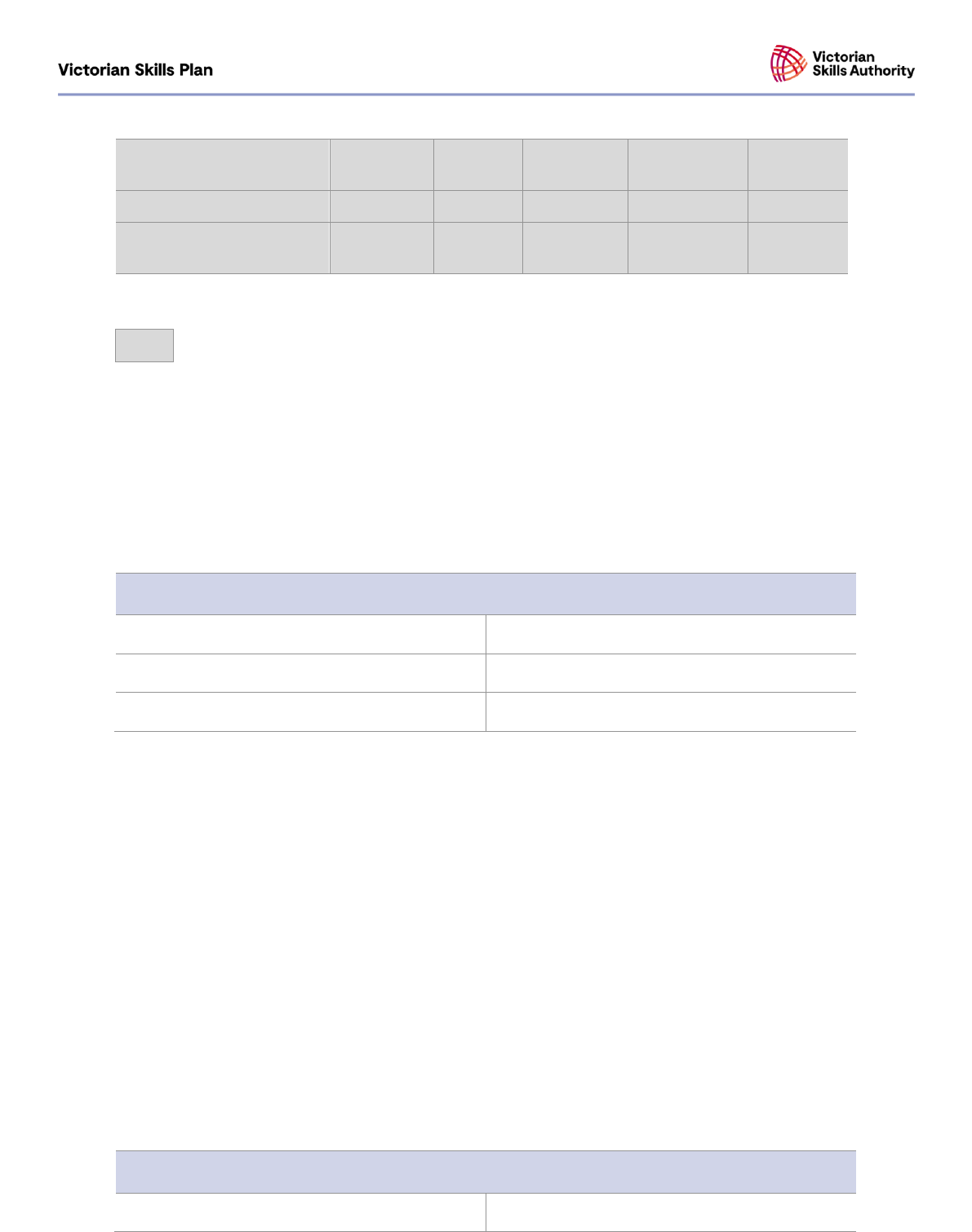
Industry Insight | Rental, Hiring and Real Estate Services | October 2022
15
Contract, program and project
administrators
650
50
3.0%
Less than 50
50
Finance managers
1,200
50
3.3%
Less than 50
50
Financial investment advisers
and managers
650
50
3.7%
Less than 50
50
Legend
Above Victorian employment growth average between 2022 and 2025
Technological advancements that enable online inspections and auctions along with regulatory reform
are driving demand for the new and emerging jobs detailed in Table 6. The emphasis on regulatory
roles corresponds with ongoing concern about ethical compliance in the real estate sector. It will
become increasingly valuable for agencies to employ workers skilled in legal compliance. Emerging
occupations are defined as new, frequently advertised jobs which are substantially different to
occupations already defined in ANZSCO.
75
Table 6 | Emerging occupations in the rental, hiring and real estate services industry
76
Emerging occupations
• Data analysts
• Online buyer’s advocates
• Owner’s corporation managers
• Pricing analysts
• Regulatory affairs specialists
• Regulatory compliance officers
Skills shortages in the rental, hiring and real estate services industry
require more immediate rectification than occupational shortages
The rental, hiring and real estate industry has few occupations currently in shortage. A shortage exists
when employers are unable to fill or have considerable difficulty filling vacancies for an occupation at
current levels of remuneration and conditions of employment, and in reasonably accessible locations.
Where an occupation specialisation is in shortage, the occupation will be treated as in shortage.
The National Skills Commission’s Skills Priority List identifies no current occupational shortages in
rental, hiring and real estate services for Victoria.
77
However, consultation with industry as part of the
development of the Skills Plan indicated that shortages may exist in specific regions or occupations
such as general clerks and receptionists. Industry also highlighted demand for real estate agents may
drive shortages in the future (Table 7). This is underpinned by a requirement that real estate agents
need to have completed a Certificate IV in Real Estate Practice to perform full duties (e.g., conduct
inspections), which requires the existing workforce to provide supervision until employees are fully
qualified. Real estate agents that wish to open their own business are required to hold a Diploma of
Property (Agency Management) and have operated for at least one year.
Table 7 | Occupational shortages facing the rental, hiring and real estate services industry
78
Occupational shortages
• Clerks
• Real estate agents (possible in the future)
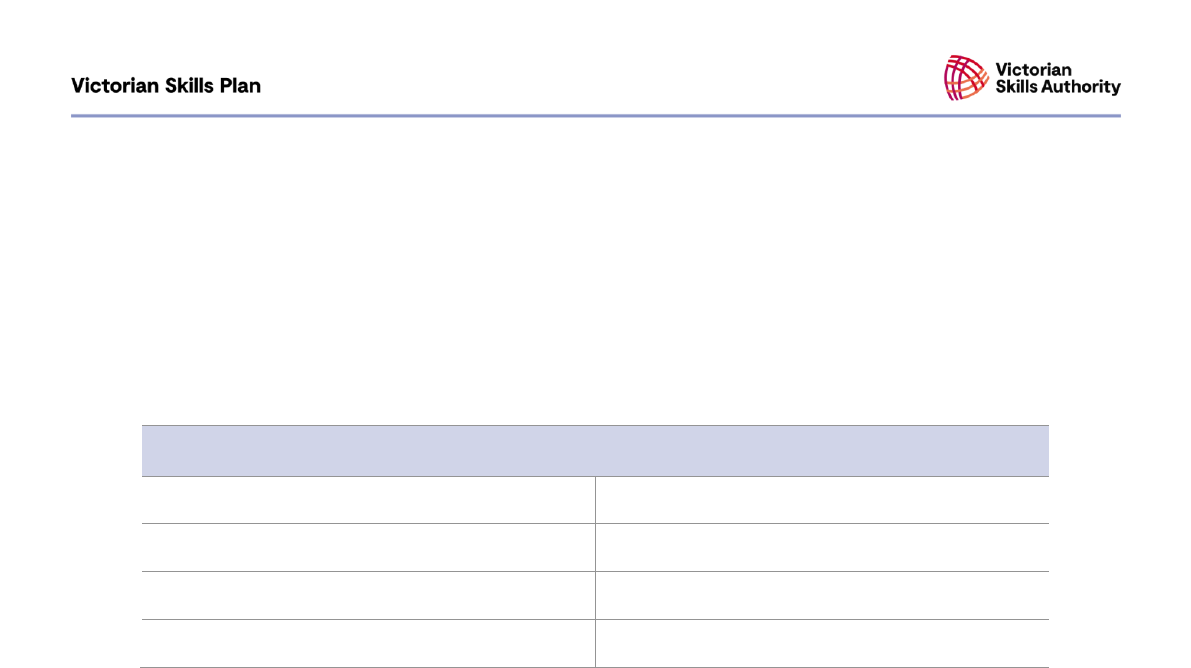
Industry Insight | Rental, Hiring and Real Estate Services | October 2022
16
Regulatory reform and technological advancements are driving skills shortages among the existing
workforce. As described above, there is a growing emphasis on ethics, compliance and digital literacy.
Property managers who work with vulnerable renters who now receive more robust legal protection
before eviction will need skills in engagement and negotiation.
79
General skills that enable greater
career progression and enhance management of agencies are also in shortage.
A list of specific skills shortages across the rental, hiring and real estate services workforce is shown in
Table 8.
Table 8 | Skills shortages facing the rental, hiring and real estate services industry
80
Skills shortages
• Business management
• Digital capability
• Empathy and engagement (for vulnerable cohorts)
• Entrepreneurship
• Ethics and compliance
• Planning and organising
• Regulatory and legislative literacy
• Teamwork

Industry Insight | Rental, Hiring and Real Estate Services | October 2022
17
Education and training pipeline
There were around 4,070 enrolments in rental, hiring and real estate services related VET
qualifications in 2020
m
and close to 1,150 relevant enrolments in Higher Education in 2019.
81
,
82
This
should translate to more than 4,200
n
graduating students entering the workforce each year with
relevant qualifications, suggesting a strong likelihood of meeting projected demand, although some
will seek employment in other industries. For further detail, see the collaborative response toward the
end of this report.
VET remains a vital pathway into the real estate sector
VET will continue as a significant channel of education supply to the rental, hiring and real estate
services workforce, with 36 per cent of workers holding a VET level qualification as their highest level
of education.
83
VET is likely to become a more vital pathway for workers in this industry amid recent
regulatory reforms to the real estate sector, requiring real estate agents (a top employing occupation)
to hold a Certificate IV in Real Estate Practice and accounts for almost all VET activity for the industry.
By contrast, VET is not a significant pathway for the other rental and leasing sector.
VET Activity
People enrol in VET courses for one of three main reasons:
•
to prepare for employment
•
to support current employment
•
to progress their careers within the industry.
This equates to training categorised as prior to employment; with employment (as an apprenticeship
or traineeship) and upskilling once qualified as shown in Table 9. The table shows the enrolments in
2020 VET courses on the Victorian Funded Course List (FCL) and the Victorian Funded Skill Set List
(FSSL)
84
,
85
related to this industry and against each category. The enrolment numbers are drawn from
Total VET Activity (TVA) which comprises enrolments supported by public funding or private
contribution.
As part of preparing this report, industry representatives have provided their perspectives on the
purpose of these qualifications, which is summarised in Figure 2 and helps to read Table 9.
m
VET enrolments related to the Rental, hiring and real estate services industry include only courses that are deemed as primary pathways into
this sector. Many of these courses serve multiple industries and the total enrolment numbers are reflective of this broader pipeline. VET
enrolments in courses that primarily feeds into other sectors but also support the Rental, hiring and real estate services industry are included in the
industry in which the course primarily supports.
n
This number is determined by taking the total number of VET enrolments in courses undertaken prior to employment, combined with 1/3 of the
total number of HE enrolments in AQF 5-8 courses (as these courses are traditionally undertaken prior to employment and the average Bachelor
degree is three years, so only those in their final year of study will enter the workforce the following year).
In 2020, there were approximately 4,050 enrolments in Victoria in the Certificate IV in Real Estate
Practice, with the majority enrolled prior to commencing employment.

Industry Insight | Rental, Hiring and Real Estate Services | October 2022
18
Figure 2 | VET pipeline key
Table 9 | Victorian VET pipeline for rental, hiring and real estate services
o
Prior to employment
Qualifications (3,930 TVA enrolments 2020)
Certificate IV
3,930
Certificate IV in Real Estate Practice (Q,AT,EIR)
3,930
With employment (apprenticeship and traineeship)
Qualifications (121 TVA enrolments 2020)
Certificate IV
121
Certificate IV in Real Estate Practice (Q,EIR)
121
Upskilling once qualified
Qualifications (17 TVA enrolments 2020)
Diploma
17
Diploma of Property (Agency Management) (Q,EIR)
17
Note: Enrolment figures in the table above are as reported by NCVER, Total VET student and courses 2020: program
enrolment. There may be instances where program enrolments are not reported by providers to NCVER and therefore not
included in the enrolment figures in the total VET training activity data. Total VET activity for 2021 is expected to be released
in August 2022.
Higher education is not a significant pathway into the industry but offers
targeted qualifications
Higher education also provides a pathway into the rental, hiring and real estate services industry, with
31 per cent of workers holding a degree or above as their highest level of education.
86
Activity is
concentrated in a small number of targeted qualifications that support the real estate sector. The other
rental and leasing sub-sectors do not rely significantly on these qualifications.
Occupations in the industry that are relevant to higher education qualifications are projected to grow
over the next five years.
87
These qualifications provide workers with opportunities to deepen their
o
VET courses can support a range of occupations across a range of industries, and occupations can also support a range of
industries. To present the likely VET trained employment pipeline by industry, enrolments for a course have been assigned to
the most common industry in which people seek employment.
1.
‘AT’
indicates a classroom-based course is also available as an apprenticeship or traineeship
option
2.
‘Q’
indicates industry values the course as a qualification
3.
‘SS’
indicates industry values the course as a skill set
4.
‘EIR’
indicates it is an Endorsed Industry Requirement as noted by industry
5.
‘OL’
indicates the course leads to an Occupational License as noted by industry
Note: Industry has not provided feedback on all qualifications and where indicated; each value
assignment can be reviewed in the future.

Industry Insight | Rental, Hiring and Real Estate Services | October 2022
19
understanding of the real estate sector and equip students with skills relevant to operating their own
agencies.
In 2019, there were close to 1,150 equivalent full-time study load (EFTSL)
p
enrolments across real
estate related courses delivered by Victorian universities.
88
The rental, hiring and real estate services
industry pipeline in the higher education system is shown in Table 10. Only courses with more than
100 EFTSL are included. Noting many of these courses serve multiple industries, the total EFTSL
numbers are reflective of this broader pipeline.
Table 10 | Higher education pipeline for rental, hiring and real estate services in Victoria, high
enrolment courses with EFTSL over 100
89q
Other Management and Commerce (1,146 EFTSL, Victoria, 2019)
Australian Qualification Framework 9+ (e.g.,
Master and above) (337 EFTSL)
AQF 5-8 (e.g., Diploma, Bachelor, Hons) (809
EFTSL)
• Master of Property (337)
•
Bachelor of Property and Real Estate (347)
•
Bachelor of Applied Science (Property and
Valuation) (Hons) (246)
•
Bachelor of Property and Real Estate/Bachelor of
Commerce (216)
p
Equivalent full-time student load (EFTSL) is the measure used to determine a student's study-load. The University sets a unit
value for each of its courses. One EFTSL is the amount of student load determined by the University to be equal to a full-time
load at 100 percent intensity for one student for one year.
q
A course may be allocated to different narrow field of educations by different higher education providers based on the primary
purpose of the course. Higher education enrolments reported against a course under a specified narrow field of education
reflect only the portion of enrolment allocated to the narrow field of education and are not reflective of the total enrolment for the
course.
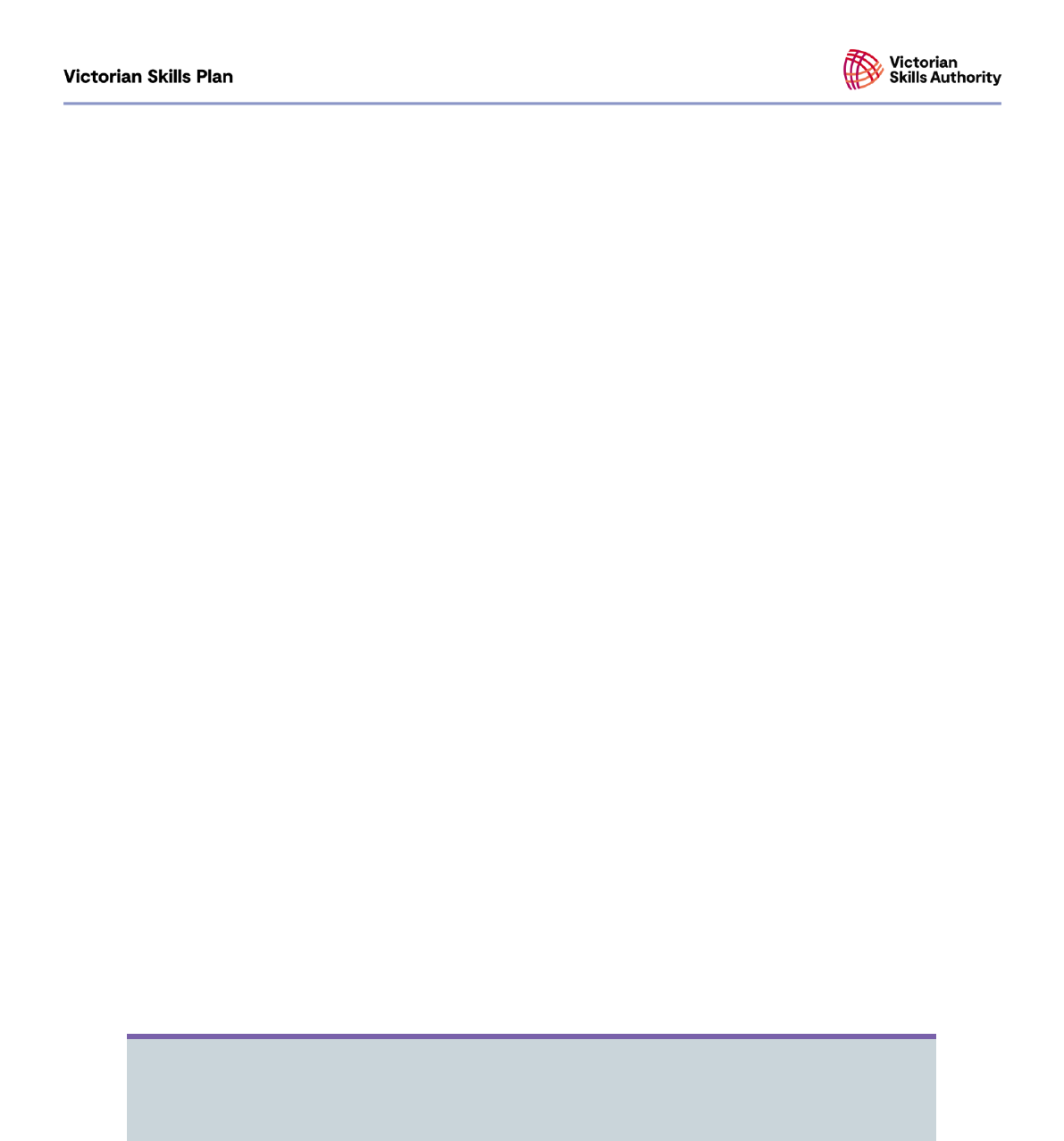
Industry Insight | Rental, Hiring and Real Estate Services | October 2022
20
Workforce priorities
Key workforce priorities centre on improving quality pathways to
employment and increasing specialised micro-credentials
The rental, hiring and real estate services industry needs to ensure that its workforce has the skills it
requires to meet industry needs. The workforce needs to keep pace with regulatory reform. The
number of public complaints that are being made against workers in the real estate sector for non-
compliance with new and existing laws (e.g., underquoting) suggests this is a concern.
Key challenges exist to address the supply and skill of workers. Some challenges extend beyond the
remit of the Skills Plan, such as industry awards and remuneration. Other challenges focus on fewer
than required individuals choosing to enter the industry and difficulty retaining existing workers.
Two key priorities for the industry are identified. Responsibility for delivering on these priorities lies
with many stakeholders, however education and training has a key role to play.
Adapt employment and education practices to align with the new minimum
qualification for real estate agents
The Certificate IV in Real Estate Practice is the new minimum qualification for real estate agents.
Agents’ representatives are also required to complete 18 units of competency before becoming
licensed. As required by Victoria’s Business Licensing Authority, an employee of a real estate agency
cannot attend an auction or open house inspection in an active capacity without either a real estate
agent or agent’s representative licence. This creates a barrier to obtaining practical experience and
employment through a traineeship pathway – previously, fewer units were required for completion to
become licensed as an agent’s representative and attend on-site inspections and auctions.
Strategic workforce planning will be required to ensure that the workforce pipeline matches demand
and keeps pace with market fluctuations. The industry can also explore opportunities to align learner
experience with employment practices within the remit of the new regulations. Practical work
experience is essential to ensure that learners are job ready. The industry is challenged to provide this
to learners that may increasingly opt for a classroom-based pathway that is less time-consuming.
The industry can also focus on cultivating a robust understanding of regulatory requirements and
compliance with professional development opportunities, informed by recent changes to rental laws
and an increasing number of complaints regarding agent conduct and underquoting in Victoria.
Table 11 | Issues to address to align with new regulations
• Regulatory changes that pose new barriers to obtaining practical experience and employment for
new employees that have not yet achieved the Certificate IV in Real Estate Practice.
• Responding to changing regulatory requirements that lift expectations for agent conduct.
Provide career advancement opportunities by developing specialised skills in the real
estate sector, such as auctioneering or valuation through further study
Workers encounter a diverse range of roles once they complete entry-level training. Some of these
roles require specialised skills, such as auctioneering and valuation. Senior roles require business
management and human resources skills across the industry. The industry therefore needs to build
specialised skills for workers in the real estate sector to meet current and future role demands. Advice
provided through industry engagement with the Victorian Skills Authority can help identify where
existing courses and units may be of value to do this. Career advancement opportunities will also
increase retention, address skills shortages, and meet future demand.

Industry Insight | Rental, Hiring and Real Estate Services | October 2022
21
Table 12 | Issues to address to provide career advancement opportunities
• High level of churn in entry-level workforce.
• Growing demand for specialised roles in the real estate sector.

Industry Insight | Rental, Hiring and Real Estate Services | October 2022
22
Collaborative response
The education and training response can better align with industry needs
and regulatory reform
The education and training response has a key role to play in helping to address the two key
workforce issues for the industry:
1. Adapt employment and education practices to align with the new minimum qualification for real
estate agents
2. Provide career advancement opportunities by developing specialised skills in the real estate sector,
such as auctioneering or valuation through further study.
The education and training system has a key role to play in addressing these workforce priorities.
The education and training response will be critical to ensure regulatory reform is upheld whilst
ensuring industry continues to have the skilled workforce it needs to meet demand. As described
above, recent changes to regulation prevent students from shadowing fully licensed operators until
they have completed a prescribed number of units. Consultation highlighted that this compromises
job-readiness and encourages students to obtain a classroom-based qualification as soon as possible.
A possible area of focus is to improve practical experience for current and future workers, in line with
new regulations.
The education and training response can also support qualified workers to advance their skill set
through micro-credentials, short courses and full qualifications to keep pace with market fluctuations
and changing skill demands. For example, the system could explore introducing a sector-specific short
course or promote existing small business qualifications, such as a Certificate IV in Entrepreneurship
and New Business.
90
Similarly, specific training or qualifications for auctioneering and valuing could
assist in cultivating the right skills to match industry demands.
91
Industry partnerships can assist in
ensuring content is practical and relevant. These opportunities also give workers avenues for career
advancement, increasing attraction and retention.
The regulatory context of the real estate sector and ongoing concern regarding agent conduct
highlights the importance of workers having the skills and knowledge required to uphold their
legislative and ethical obligations. The education and training response can focus on continuing
professional development opportunities that actively engender ethical practices. This can benefit from
increased industry exposure for students.
There are opportunities to improve how industry develops capability and
meets workforce demand
The education and training response alone cannot deliver on the two workforce priorities to improve
how the rental, hiring and real estate services industry attracts and manages talent. It is critical that
the system works together with government and industry to support the training and skilling
requirements necessary to meet future demand and deliver a coordinated response.
Consultation revealed that some providers are now offering the course over four to six weeks with
students able to obtain a licence to operate as an agent’s representative or real estate agent with no
practical experience. This is inconsistent with the intent of regulatory reform and risks unethical
practice. Industry can consider offering or simulating practical experience for students to learn from
experienced practitioners and ensure they are job-ready within the scope of the new regulations.
The rental, hiring and real estate services industry can focus on adapting to new regulations and
developing specialised skills to meet workforce demand.
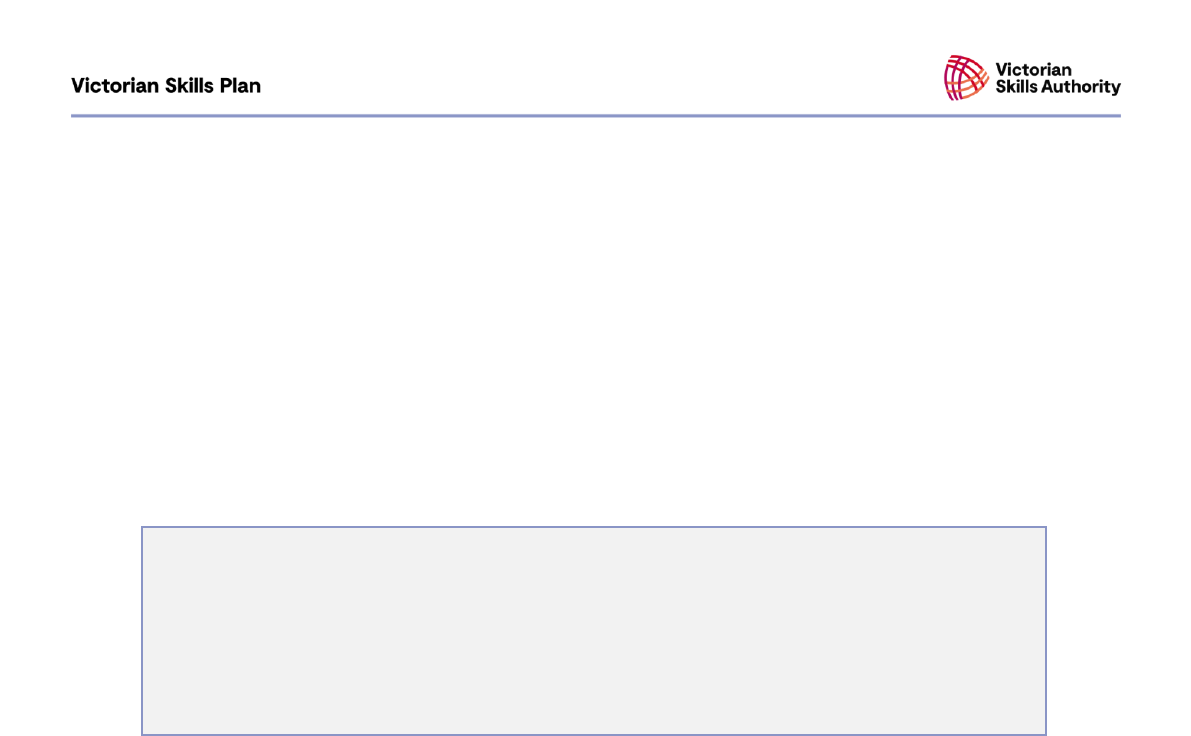
Industry Insight | Rental, Hiring and Real Estate Services | October 2022
23
Industry can also maximise the new entry pathway for real estate agents and focus on both protecting
the quality of the pathway and removing barriers to practical experience where possible. Both industry
and the education and training response can be alert to the risk that private providers will offer courses
inconsistent with the intent of regulatory reforms. Industry also has a role in ensuring that any practical
experience is facilitated by supervisors with an up-to-date understanding of regulatory requirements.
Given the barriers and time to entry for new real estate agents, industry will also need to revisit job
design and existing recruitment and retention policies and practices to ensure that its workforce can
meet fluctuating demand. Industry plays a significant role in giving the existing workforce the space,
time, and opportunity to cultivate specialised skills and to ensure that employees are supported to
grow their careers. Flexible work arrangements, funding and study leave will assist to achieve this
objective.
Actions for consideration for education, industry, and government
• Increase practical experience opportunities for students seeking to become real estate agents.
• Facilitate specialisation with targeted education and training opportunities in areas such as
auctioneering and valuation.
• Ensure existing workforce practices and recruitment policies respond effectively to fluctuations
in demand across the industry and the time taken to train new agents.

Industry Insight | Rental, Hiring and Real Estate Services | October 2022
24
Appendix A: Data methodology
VSA Employment Model overview
The VSA Employment Model produces estimates of:
• projected employment growth between 2022 and 2025
• projected retirements between 2022 and 2025
• projected total new workers needed between 2022 and 2025.
Table 13 further defines the model outputs and identifies the primary source for each output.
Table 13 | Employment model outputs
All outputs are modelled at the occupation, industry and region level:
• occupations are defined by 4-digit occupation unit groups in the Australian and New Zealand
Standard Classification of Occupations (ANZSCO)
• industries are defined by 1-digit industry divisions in the Australian and New Zealand Standard
Industrial Classification (ANZSIC)
• regions are defined by the nine Regional Partnerships of Victoria as outlined by the Victorian
Department of Jobs, Precincts and Regions.
Benchmark data from the NSC give estimates of projected employment growth. Using an approach
called iterative proportional fitting, the detailed occupation, industry and region breakdowns are
generated by applying the distribution of employment in ABS Census and other data to the benchmark
projections.
The model was developed by the VSA with the support of Nous and Deloitte Access Economics
(DAE). The sections further below describe how the key outputs were modelled.
Employment growth, 2022-25
Source: VSA and Nous (2022), modelling of NSC (2022) Employment Projections
This modelling takes the NSC Employment Projections as the benchmark data for 2022-25 and breaks
it down into occupation by industry by region tables.
Employment growth
2022-25
Retirements
2022-25
New workers needed
2022-25
Definition
Change in the number of
workers employed from 2022
to 2025
Workers expected to
permanently leave the
workforce from 2022 to 2025
Workers needed from 2022 to
2025 to meet demand from
growing employment and to
replace retirees
Primary
source
Benchmarked to the NSC
Employment Projections
Derived from retirement rates
from Australian Census
Longitudinal Dataset
The sum of employment
growth and retirements
The VSA Employment Model gives a best estimate of employment by industry, occupation and
region. It provides an indication but does not, and cannot, tell the full story of the region’s economy.

Industry Insight | Rental, Hiring and Real Estate Services | October 2022
25
The benchmark data sources provide ‘control totals’ for occupation, industry and region breakdowns
independently. However, they do not provide the interaction between each of the variables. For
example, they do not give the breakdown of occupations within industries.
Iterative proportion fitting uses a detailed ‘seed’ data table with the necessary breakdowns from a
representative dataset and scales that distribution to control totals in the new dataset. Over many
iterations, the seed data is transformed to sum up to the occupation, industry and region control totals.
The seed data comes from the ABS Census 2016. The control totals for occupation and industry come
from the NSC's Employment Projections, and the control totals for region come from the NSC’s Small
Area Labour Markets data. Table 14 describes the inputs in detail.
The modelling results in:
• industry and occupation projections that align with the NSC Employment Projections
• regional data that matches the distribution across NSC Small Area Labour Markets
• industry by occupation by region data tables that approximate the distribution within the ABS
Census 2016.
Table 14 | Data sources used to model employment growth from 2022 to 2025
Type
Data
Source
Seed
Employment x
3-digit industry (ANZSIC3) x
4-digit occupation (ANZSCO4) x
Statistical Area Level 2 (SA2)
ABS, Census of Population and Housing, place of usual
residence data
Control total
Employment x SA2
NSC, Small Area Labour Markets, ‘SALM smoothed SA2
Datafiles (ASGS 2016) - March quarter 2022’.
Control total
Employment x ANZSIC1
NSC, Employment Projections, 2020-25
Control total
Employment x ANZSCO4
NSC, Employment Projections, 2021-26
Notes:
1. Following the modelling, SA2 data is aggregated up to Regional Partnership region. Where an SA2 spans multiple regions,
the estimates have been apportioned based on geographic area.
2. The NSC industry projection is often not available until some months after the occupation projections. As at May 2022,
there were no 2021 to 2026 ANZSIC1 by state forecasts available. The previous release of 2020 to 2025 ANZSIC1 by
state forecasts were used and scaled up to match the Australian total employment numbers in the ANZSCO4 forecasts.
Retirements, 2022-25
Source: VSA, Deloitte Access Economics (DAE) and Nous (2022), Retirement projections 2022-2025
Retirements are estimated by applying occupation-specific retirement rates to the employment
projections.
Using the Australian Census Longitudinal Dataset, an estimate of the size of the labour force aged 50
and over in 2016 was taken and compared to the size of the labour force aged 45 and over in 2011.
After adjusting for migration, the gap is an estimate of retirements between 2011 and 2016. The
relative age structures of occupations in the Census 2011 were then used to estimate retirements at
the detailed occupation level (ANZSCO4).
The outputs were used to estimate an occupation-specific retirement rate, calculated as:
Retirement rate = retirements between periods t and t+1 / employment at t

Industry Insight | Rental, Hiring and Real Estate Services | October 2022
26
The retirement rates were applied to the employment projections to estimate the number of
retirements between 2022 and 2025 at the region (Regional Partnerships), industry (ANZSIC1) and
occupation (ANZSCO4) level.
New workers needed, 2022-25
New workers needed is the simple sum of employment growth and retirements. It is calculated at the
region (Regional Partnerships), industry (ANZSIC1) and occupation (ANZSCO4) level.
New workers needed is an estimate of demand for workers to join an industry, occupation or
region. In this model, demand comes from growth in employment (as business, government and other
employers expand their operations) and the need to replace retirees who leave the workforce.
r
New workers needed is not an estimate of skills shortage. In the VSA Employment Model,
demand is always met by supply of new workers who enter the work force from study, unemployment,
migration, a change in industry or occupation, or other avenues.
This means that the VSA Employment Model is not suitable for identifying current or future skill
shortages. The Victorian Skills Plan draws on the National Skills Commission’s Skills Priority List and
stakeholder feedback to identify skills shortages within industries and across Victoria.
r
This will generally underestimate demand as it does not account for the need to replace workers who leave a job for other
reasons, such as switching occupations or migrating out of Victoria.

Industry Insight | Rental, Hiring and Real Estate Services | October 2022
27
Appendix B: Victorian VET pipeline methodology
Enrolment numbers
Sources:
National Centre for Vocational Education Research (NCVER) (2021), Total VET students and courses
2020, available here.
Victorian Department of Education and Training (2022), Funded Course List, available here.
Victorian Department of Education and Training (2022), Funded Skill Set List, available here.
The Victorian VET pipeline table estimates the number of enrolments in each qualification and skill set
for the 2020 academic year in Victoria. The NCVER total VET students and courses is used as the
dataset. Only courses on the Victorian Funded Course List (FCL) and the Victorian Funded Skill Set
List (FSSL) are included.
The following steps were taken to develop the table:
3. Each course was reviewed by IAG members and allocated to only one of three main reasons for
studying: to prepare for employment; to support current employment (apprenticeship or
traineeship); and to progress their career. Each course is then listed under their respective
allocation.
4. The numbers of students who enrolled in that course in 2020 is then noted in the VET pipeline
table.
5. For courses that provide an apprenticeship and traineeship option and a classroom-based
option, these courses are duplicated twice in the table, with enrolment numbers split across the
other two options: the number of apprentice and trainee enrolments are reported under the header
‘with employment (apprenticeship and traineeship); the number of classroom-based enrolments is
shown under the purpose for completing the classroom-based option (either to prepare for
enrolment or to progress their career). An (‘
AT’
) is noted next to these duplicated classroom-based
courses to indicate they are also delivered as an apprenticeship or traineeship.
6. Where industry has provided feedback on the value of qualification or skill set, a (
‘Q’
) indicates it is
valued as a qualification, while a (
‘SS’
) indicates it is valued as a skill set. A (
‘EIR’
) indicates it is an
Endorsed Industry Requirement and (
‘OL’
) indicates it is an Occupational License. Industry has not
provided feedback on all qualifications and where indicated; and each value assignment can be
reviewed in the future.
7. Numbers are then totalled in their respective headers above. For the purpose of the Skills Plan, the
number of enrolments ‘prior to employment’ is a key focus for industry as it indicates how many
students are being trained but are not yet employed.
The 2020 enrolment figures are a best estimate of the pipeline of workers for industry to draw on.
The 2020 figures were the latest dataset available from the NCVER at the time of developing the
Skills Plan and will be updated in future iterations of this document. They intend to provide an
indication of the pipeline but do not and cannot tell the full story of workforce supply. Factors such
as completion rates and the COVID-19 pandemic during 2020 are also likely to impact the
availability of the future workforce.

Industry Insight | Rental, Hiring and Real Estate Services | October 2022
28
Appendix C: Stakeholder engagement process
Stakeholder engagements allowed VSA to test, update and validate the content of the rental, hiring
and real estate services industry insight report. Stakeholders from organisations in government,
education and industry were engaged to provide input to the report and the Skills Plan more broadly.
Specifically, stakeholders provided insight on economic outlook, workforce and skilling challenges and
an education and training response across three rounds of consultations. Engagements guided initial
thinking and research, as well as opportunities to test and revise the insights. We would like to thank
the following organisations for their participation in the stakeholder engagement process. Table 15
lists the organisations involved.
Table 15 | Consultation participants
Organisation
Australasian Security Industry Association Ltd
Australian Digital and Telecommunications Industry Association
Australian Education Union - Victoria
Australian Industry Group
Australian Services Union
Bendigo Kangan Institute
Box Hill Institute
Building Designers Association Victoria
Business Services Industry Advisory Group
Communications and Information Technology Industry Training Co (CITT)
Facility Management Association (FMA)
Print and Visual Communication Association - Victoria
Real Estate Institute of Victoria
Victorian Chamber of Commerce and Industry

Industry Insight | Rental, Hiring and Real Estate Services | October 2022
29
References
1
Australian Bureau of Statistics (ABS) (2008), Australian and New Zealand Standard Industrial Classification (ANZSIC), 2006 (Revision 1.0)
Division L – Rental, Hiring and Real Estate Services, available here.
2
VSA and Nous (2022), modelling of NSC (2022) Employment Projections.
3
VSA and Nous (2022), modelling based on Australian Bureau of Statistics, Labour Force, February 2022.
4
ABS (February 2022), Labour Force Quarterly, Employment by industry (Victoria), available here.
5
VSA and Nous (2022), modelling of NSC (2022) Employment Projections.
6
VSA and Nous (2022), modelling based on Australian Bureau of Statistics, Labour Force, February 2022.
7
ABS (February 2022), Labour Force Quarterly, Employment by industry (Victoria), available here.
8
Victorian Skills Authority (VSA) and Nous (2022), modelling of NSC (2022) Employment Projections.
9
VSA and Nous (2022), modelling of NSC (2022) Employment Projections.
10
VSA, Deloitte Access Economics (DAE) and Nous (2022), Retirement projections 2022-2025.
11
VSA and Nous (2022), modelling of NSC (2022) Employment Projections.
12
VSA and Nous (2022), modelling of NSC (2022) Employment Projections.
13
VSA and Nous (2022), modelling based on Australian Bureau of Statistics, Labour Force, February 2022.
14
ABS Census (2016), Education attainment by industry (Victoria).
15
NCVER (2021), Total VET students and courses 2020, available here.
16
Department of Education, Skills and Employment (2021), Selected Higher Education Statistics – 2019 Student data, available here.
17
NCVER (2021), Total VET students and courses 2020, available here.
18
VSA and Nous, 2022 modelling based on ABS Labour Force, Australia, February 2022.
19
ABS (February 2022), Labour Force Quarterly, Employment by sex (Victoria), available here.
20
ABS Census (2016), Employment by age group (Victoria).
21
Australian Industry and Skills Committee (AISC) (2022), Property Services, available here.
22
ABS (2008), Australian and New Zealand Standard Industrial Classification (ANZSIC), 2006 (Revision 1.0) Division L – Rental, Hiring and Real
Estate Services, available here.
23
VSA and Nous, 2022 modelling based on ABS Labour Force, Australia, February 2022.
24
Victorian Skills Commissioner (VSC) (2020), Sector Snapshot: Victoria’s Real Estate Sector, available here.
25
DiNuzzo, R (2021), Victoria’s $2.56 trillion real estate market, Realestate.com.au, available here.
26
DiNuzzo, R (2021), Victoria’s $2.56 trillion real estate market, Realestate.com.au, available here.
27
VSC (2020), Sector Snapshot: Victoria’s Real Estate Sector, available here.
28
Propertyupdate.com.au, 30 August 2022. Available here
29
VSC (2020), Sector Snapshot: Victoria’s Real Estate Sector, available here.
30
Victorian Department of Environment, Land, Water and Planning Victoria (2019), Victoria in Future 2019, Population Projections 2016 - 2056,
available here.
31
ABS (March 2021), Regional internal migration estimates, provisional, available here.
32
Kelly, M (2022), Freedom frenzy drives record Victorian regional price rises, Australian Financial Review, available here.
33
VSC (2020), Sector Snapshot: Victoria’s Real Estate Sector, available here.
34
Carbines, S (2022), Melbourne rental market: Renters’ fresh struggle as conditions shift’, Realestate.com.au, available here.
35
VSC (2020), Sector Snapshot: Victoria’s Real Estate Sector, available here.
36
ABS (February 2022), Labour Force Quarterly, Employment by industry (Victoria), available here.
37
PESTLE ANALYSIS (2022), The PESTLE Framework Explained: 6 Important Factors, available here.
38
Mizen, R (2022), Rate hike expectations firmly in 2022, but how high can they go?, Australian Financial Review, available here.
39
Consumer Affairs Victoria (2021), Guide to rental law changes in Victoria, available here.
40
Engage Victoria (2020), Review of real estate education regulations, available here.
41
Redman, E (2022), Blight on the industry: Victorian property underquoting laws set for review, The Age, available here.
42
Reserve Bank of Australia (2022), Household Sector, available here.
43
Victorian Department of Families, Fairness and Housing (2022), Rental Report statistics – March quarter 2022, available here.
44
Marsh, S (2022), What will happen to property prices when interest rates rise? Here’s what the experts say, available here.
45
Australian Banking Association (2021), Banking by the numbers and COVID-19 Timelines, available here.
46
REIV (2022), Victorian real estate market closes 2021 on a high, available here.
47
Rural Councils Victoria (2021), Demographic Destiny, available here.
48
City of Greater Geelong (2021), Armstrong Creek – Whole of Growth Area, available here.
49
Integra Group (2020), Thriving Community of Lucas Set to Grow, available here.
50
City of Greater Bendigo (2018), Greater Bendigo Housing Strategy, available here.
51
Victorian Department of Environment, Land, Water and Planning Victoria (2019), Victoria in Future 2019, Population Projections 2016 - 2056,
available here.
52
E Koehn and J Irvine (2021), The five-day office week is dead, long live the hybrid model, says productivity boss, Sydney Morning Herald,
available here.
53
Kennedy, J & et al (2017), Mapping the Melbourne Sharing Economy, University of Melbourne, available here.
54
VSC (2020), Sector Snapshot: Victoria’s Real Estate Sector, available here.
55
Victorian Building Authority (2022), Combustible Cladding, available here.
56
Victorian Building Authority (2022), Combustible Cladding, available here.
57
Kennedy, J & et al (2017), Mapping the Melbourne Sharing Economy, University of Melbourne, available here.
58
Wolfe, N (2021), The great summer Australian roadtrip struggling as car rental prices soar, available here.
59
Wolfe, N (2021), The great summer Australian roadtrip struggling as car rental prices soar, available here.
60
Meat & Livestock Australia (2021), Industry Projections 2021, Australian Cattle, available here.
61
Meat & Livestock Australia (2021), Industry Projections 2021, Australian Cattle, available here.
62
Brann, M (2021), Australian cattle price hits record highs off the back of November rain, ABC News, available here.
63
VSA and Nous (2022), modelling of NSC (2022) Employment Projections.
64
VSA and Nous (2022), modelling based on Australian Bureau of Statistics, Labour Force, February 2022.
65
ABS (February 2022), Labour Force Quarterly, Employment by industry (Victoria), available here.
66
VSA and Nous (2022), modelling of NSC (2022) Employment Projections.
67
VSA and Nous (2022), modelling based on Australian Bureau of Statistics, Labour Force, February 2022.
68
ABS (February 2022), Labour Force Quarterly, Employment by industry (Victoria), available here.
69
VSA and Nous (2022), modelling of NSC (2022) Employment Projections.
70
VSA and Nous (2022), modelling of NSC (2022) Employment Projections.
71
VSA, DAE and Nous (2022), Retirement projections 2022-2025.
72
VSA and Nous (2022), modelling of NSC (2022) Employment Projections
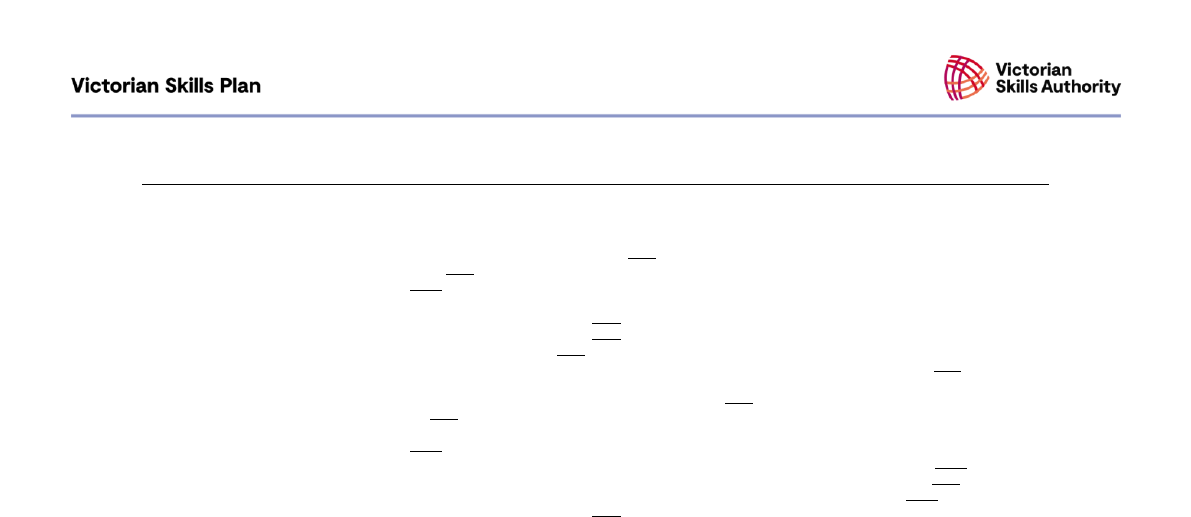
Industry Insight | Rental, Hiring and Real Estate Services | October 2022
30
73
VSA and Nous (2022), modelling of NSC (2022) Employment Projections.
74
VSA and Nous (2022), modelling based on Australian Bureau of Statistics, Labour Force, February 2022.
75
National Skills Commission (NSC) (2021), Emerging Occupations, available here.
76
NSC (2021), Emerging Occupations, available here.
77
NSC (2021), Skills Priority List, available here.
78
Victorian Skills Plan consultation (2022), industry forum
79
VSC (2020), Sector Snapshot: Victoria’s Real Estate Sector, available here.
80
VSC (2020), Sector Snapshot: Victoria’s Real Estate Sector, available here.
81
NCVER (2021), Total VET students and courses 2020, available here.
82
Department of Education, Skills and Employment (2021), Selected Higher Education Statistics – 2019 Student data, available here.
83
ABS Census (2016), Education attainment by industry (Victoria).
84
Victorian Department of Education and Training (DET) (2022), Funded course list, available here.
85
DET (2022), Funded Skill Set List, available here.
86
ABS Census (2016), Education attainment by industry (Victoria).
87
NSC (2021), Skills Priority List, available here.
88
Department of Education, Skills and Employment (2021), Selected Higher Education Statistics – 2019 Student data, available here.
89
Department of Education, Skills and Employment (2021), Selected Higher Education Statistics - 2019 Student data, available here
90
Australian Government National Careers Institute (2022), Certificate IV in Entrepreneurship and New Business, available here.
91
VSC (2020), Sector Snapshot: Victoria’s Real Estate Sector, available here.
